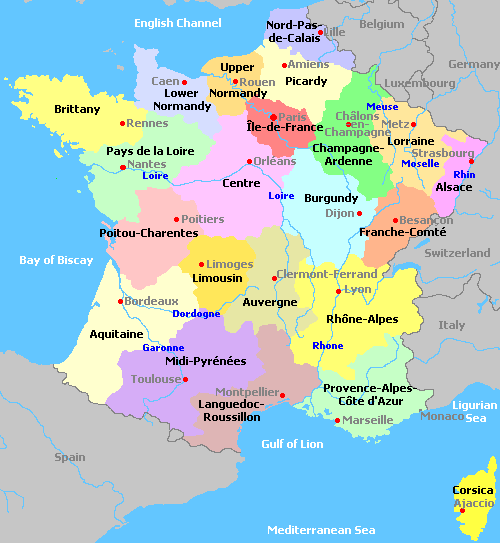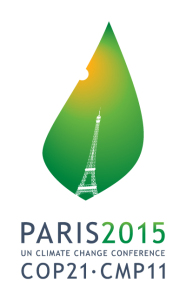
THE PARIS CONFERENCE ON CLIMATE CHANGE
BY CCA GENERAL SECRETARY, CHRIS FEGAN

We have been working in preparation for the COP21 Climate Change Conference for well over a year and, indeed, Laudato Si’ was partly aimed at influencing decision makers in Paris last December. I had a meeting with the Director of CAFOD ahead of the summit to discuss our priorities for COP21 and also how we can work together in the spirit of Laudato Si’ going forward to implement the vision of the climate change work that we share. I am delighted that we have an article from CAFOD in this edition of The Ark on their perspective on the Conference (page 7). The Conference was held in the aftermath of the awful Paris attacks and the security in the French capital was very strong and included the cancellation of some public activities planned for the Conference. Whilst I was in Paris I took the opportunity to lay a wreath on behalf of CCA at the statue in Place La Republique to those who lost their lives or were injured in the horrendous bombings and shootings.
THE PARIS CONFERENCE ON CLIMATE CHANGE
Neil Thorns is the Director of Advocacy and Communications at CAFOD (The Catholic Agency For Overseas Development) and Chair of The Climate Coalition. Here he reports on the recent Paris 2015 Climate Change Conference (COP21) held in November last year, where he worked with CCA, along with other coalition organisations, on climate change issues.
BY NEIL THORNS

When you’re in the midst of a whirlwind it’s difficult to view anything which is happening around you objectively, which leads one to either think everything is awful and we’re tail-spinning to destruction or isn’t it exciting and this energy must lead to something new. That’s what it felt like in Paris during the climate talks. When Laurent Fabius banged his gavel heralding the Paris Agreement (PA) it was difficult to judge how much progress, if any, the PA had made. With distance and time it is clear that, whilst not perfect, it set a clearer destination but, as with all things, the devil is in the detail and this is just the start of the journey.
This was the culmination of many years’ hard work and, in particular, a very intense two weeks starting on Monday 30 November when world leaders gathered in Paris to agree a new climate change deal to tackle carbon emissions and reduce dangerous warming. This meeting was the twenty-first gathering of the Conference of Parties – the 195 countries that meet annually to discuss climate issues.
Climate Change Goals

UN Climate Change Conference Paris 2015Current global climate agreements run out in 2020, so these talks were crucial to agree a new set of guidelines that include all countries and set us on a long-term path of decarbonisation. The organisation of these talks is under the UN Framework Convention on Climate Change (UNFCCC). According to the UNFCCC the objective of the 2015 conference was to achieve, for the first time in over 20 years of UN negotiations, a binding and universal agreement on climate, from all the nations of the world. If this was achieved then the talks would put governments on a more sustainable pathway for economic growth, protecting the planet and people from climate change.
The heads of state set the bar high with their ambitious statements on the first day and the fact that there were 150 leaders gathered, the highest ever under one roof for one topic, was a hopeful sign. President Obama talked of ‘submerged countries; abandoned cities; fields that no longer grow’ and said that, ‘This future is one that we have the power to change – right here, right now’. Similarly, David Cameron spoke of speaking to ‘our grandchildren if we failed’, that they would reply, ‘What was it that was so difficult when the earth was in peril, when the sea levels were rising in 2015, when crops were failing, when deserts were expanding? What was it that was so difficult?’
Before the talks CAFOD was urging leaders to agree a fair and binding global agreement to cut carbon emissions that has the needs of the world’s poorest and most vulnerable at its heart. We wanted to see progress on important areas such as supporting poorer countries to adapt to the impacts of climate change, a long-term goal to keep global temperature increases below 1.5°C and ensure there is a clear way forward after Paris.
Real Effects of Climate Change on Lives
We know from our partners in some of poorest communities around the world that climate change is affecting them now and having a big impact in their lives. In Kenya, for example, there have always been droughts, but when you hear from people like Sinteyo and her neighbours talk of these droughts happening more often and with greater severity it is clear that climate change is one of the greatest challenges to tackling poverty.
‘When I was a girl, the climate was very predictable,’ Sinteyo says. ‘The environment looked lush, and I never heard my parents complaining about it. We used to know when it would rain. In December and April rain was almost guaranteed. But now things have changed. The rains are very unpredictable. We have more droughts, less rain, and life is more difficult for my generation.’
We know from Sinteyo and millions of others living in poverty that climate change is already having devastating consequences and that this is urgent. When judged from the perspective of people like Sinteyo, living on the front-line of climate change, the PA offers hope for a brighter future, but not yet the security that it’ll get there quick enough for them. It is the start of what Pope Francis calls a global common plan.
Agreed Targets
One of the key positives within the PA is the recognition of a need to keep global temperature rise to 1.5°C rather than the previous 2°C. The most vulnerable countries and small island states have been calling for this for many years, recognising that to them the difference is a question of survival. Although, again, the PA doesn’t give a clear pathway on how to get there, there are mechanisms which bring countries back to the table and, with this new ambition, we must all ensure that there is progress towards reaching this goal.
Every country was invited, as part of the process leading up to the talks in Paris, to submit an Intended Nationally Determined Contribution (INDC) on what actions they’d take to tackle climate change post 2020. This was one of the ways in which the PA was built; these national plans were aggregated bottom up rather than as an international treaty imposing down to countries what they had to do. These INDCs need to be reviewed alongside all domestic policies to see if they are compatible and meet this new target.
We believe the PA marks the start of a new era of action on climate change. While the deal does not set a mid-century deadline for full phase out of fossil fuels which we called for, it does make clear the world must make the transition to a low carbon future. Developed countries have reaffirmed their commitment in the deal to support poorer countries financially to cope with the impacts of climate change and have recognised their historical responsibility, having contributed more to the problem of climate change, to support vulnerable countries who are impacted. With these building blocks in place we look forward to ensuring that the detail matches the ambition so that we are passing on our beautiful world safely to the next generation.


Comments are closed.